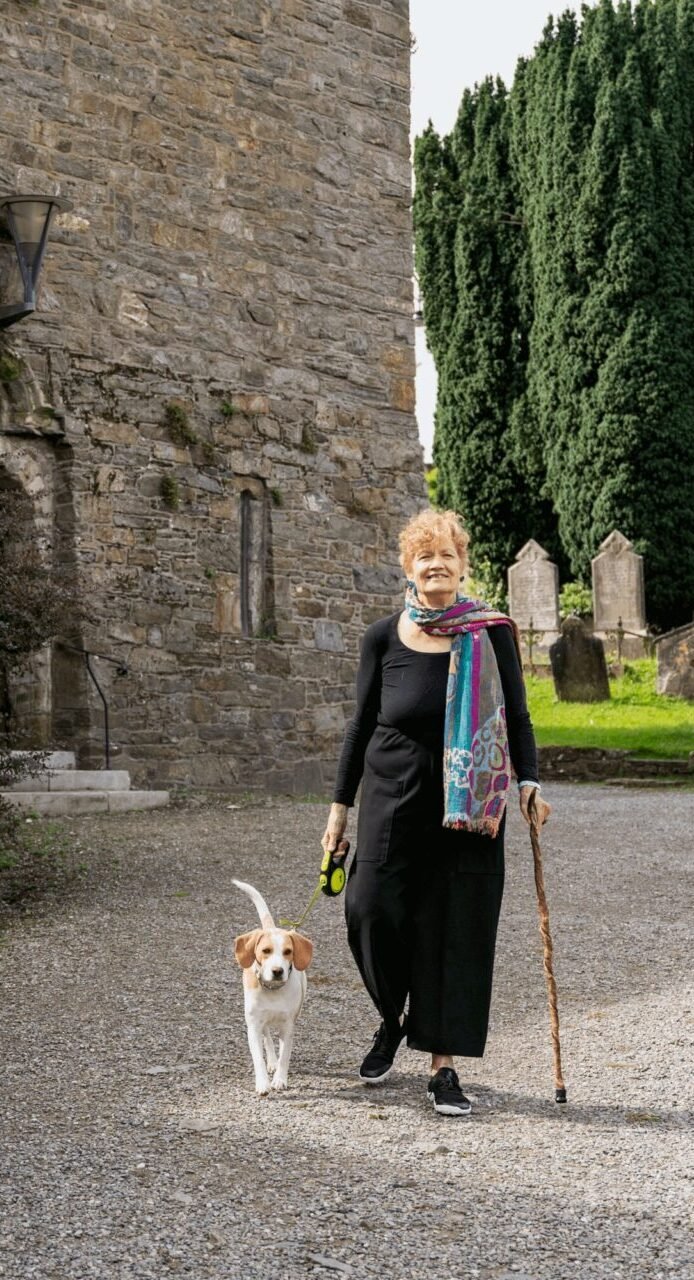
Alana’s art has been shown throughout her career in Independent Artistic Situations (ITAs). Most notably as a member of Core New Art Space Collective in Denver, Colorado, USA and recently in Kinsale Atlantic Artists in Ireland. Her early work gained notoriety with a one-woman show featuring the “Zappa Quilt,” a piece so captivating it was filmed by Playboy TV.
Alana wrestles with the difficulties inherent in translating big ideas and questions to various forms of visual outputs. As she tells us, “I spent two years investigating what is truly important to people near the end of life. As I reflected, I learned that what mattered most to me was how it felt to hear their stories and to imagine their lives. People’s reactions to the What Matters show, Gallery 23 in Kinsale Jan 16th-15th, 2026 will help me determine my next steps
Regarding her artmaking process, Alana says:
Because it is digital, the work can be any size, but because the ideas I work with are big, powerful and strong; the work needs to be as well.
Digital art can be inherently sustainable because nothing needs to be produced until someone wants to put it on their wall. Projection led naturally to VFX and film, playing with how images can morph one to another.
Login To Your Account
Thank you for being interested! Alana will write you back with a quick hello and you will know the next time you can see the artwork live, etc. With that email address, you will have a personal contact to be able to start a 1:1 conversation about Action Research, community work, or anything else
I will never spam you or share your details
SIGN UP BELOW